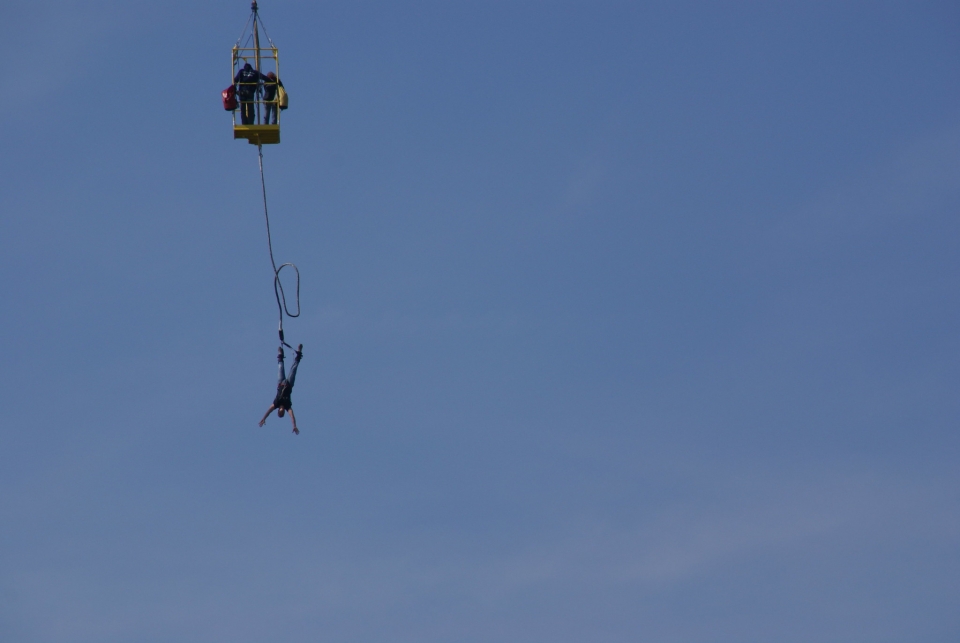
Despite being a highly popular and well-known adventure sport, few are aware of its beginnings and history. Categorised as one of the most extreme land-based sports in existence, it's fascinating to ask: Who was the first adventurer to leap into the void? And how did they do it?
Historically speaking, bungee jumping doesn't stem from a primitive sport but rather from allegorical antecedents recounting an original myth and legend.
Bungee Jumping as Ancient Ritual
The oldest traces of a practice resembling bungee jumping are rooted in the rites and customs of a distant people from Vanuatu Islands, a small archipelago in the Pacific Ocean located 1,750 kilometres from Australia.

On Pentecost Island, the Bunlap people tell the story of a man named Tamalie to explain the origin of the "Gkol" ritual. Legend states that after a quarrel with his wife, she fled by climbing a tall banyan tree and tying vines around her ankles. When Tamalie climbed after her, she jumped; he followed unaware of the vines and died, while his wife survived. This story so impacted the Bunlap people that they began practising such jumps to prevent similar tragedies, eventually formalising it as the "Gkol" ritual.
Gkol is a ceremony featuring jumps remarkably similar to bungee jumping, performed exclusively by village men. Participants leap from a 25-metre-high tower constructed entirely from bamboo and plant ropes, with natural vines precisely measured around each ankle - the ritual demands not just jumping but having one's head lightly touch the ground. Mere centimetres of error in vine length could prove fatal.

This initiation rite marks adolescents' transition to manhood and allows men to ensure bountiful harvests for the entire village. Participants range from 7-year-old boys (jumping from lower heights) to grown men. The tradition tests masculinity and serves as an omen for the village's collective future. This great challenge has evolved into a universal test of courage practised globally with some modifications and significant improvements.
Origins of Modern Bungee
In the early 1970s, German climber Helmut Kiene performed a pendulum jump between bridges over Les Usses River, spanning 50 metres. But the first modern bungee jump didn't occur until 1979, when a group of adventurers - Oxford University students and founders of the Dangerous Sports Club (Alan Weston, David Kirke, Chris Baker, Tim Hunt and Simon Keeling) - leapt from a 60-metre-high bridge. Despite legal trouble for their extreme actions, they pursued their initiative by tackling other heights including platforms, various bridges, and even hot air balloons or moving cranes.

Today, this phenomenal sport has evolved tremendously in its equipment. Where Gkol uses natural vines, the Dangerous Sports Club employed manufactured ropes, which have since undergone further advancements.
Bungee Jumping Today
As a sporting activity, modern bungee jumping has become an immensely popular activity accessible to most people above certain age limits (with recorded jumps by 9-year-olds and 75-year-olds alike) provided they meet these requirements:
- Being in good physical condition
- Having no heart conditions
- Overcoming fear of heights
The most essential equipment is an elastic cord made from numerous strands of natural latex and other materials. A bungee rope must have 400% stretch capacity to cushion the fall's impact, capable of supporting up to one tonne.

Another critical component is the harness system. Early jumps used body harnesses attaching to shoulders - extremely dangerous with high strangulation risk. Modern ankle attachments (sometimes supplemented by waist harnesses) prevent abrupt positional changes.

Jump sites undergo thorough assessment to ensure complete safety while facilitating a profound connection with nature's beauty. This incredible activity offers unparalleled freedom and a unique sensation of flight. Don't miss out!












